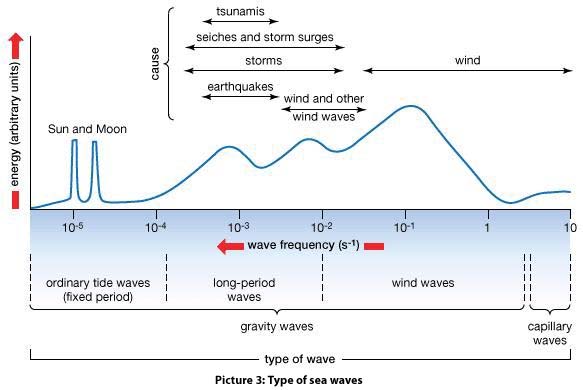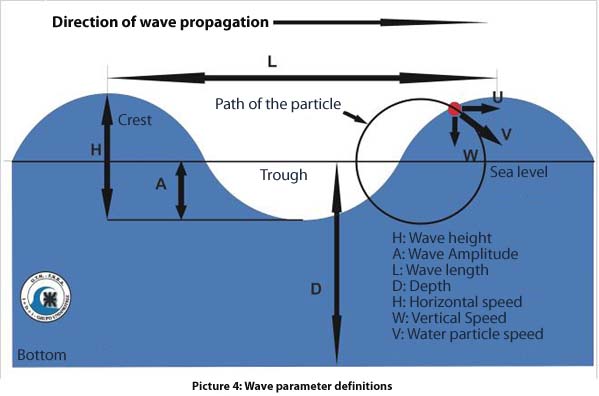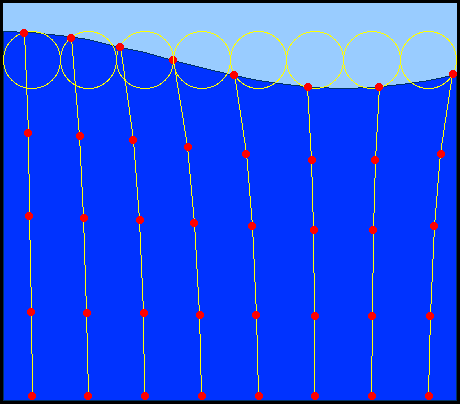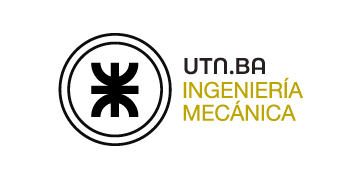The waves are the means by which energy moves, in Figure 3 can be seen a brief description of the different types of sea waves and their ability to transport energy.
 Source: Encyclopedia Britannica, Inc.
Source: Encyclopedia Britannica, Inc.
As seen in Figure 3 the waves caused by the wind are of higher energy content and hence are those destined to obtain this energy.
Reasons of their formation
- The displacements that occur due to the attraction exerted on the oceanic masses by both the sun and the moon;the result are the tides.
- The temperature variation modifies the atmospheric pressure, which in turn generates large air displacement in the form of all kinds of storms.
- The occurrence of seismic events and volcanic eruptions generate large undulating movements which propagate great distances.
Types
- Waves
- Swell
- Surf
- Rip
Classification
- Superficial
- Internal: They appear below the surface due to the variation of the density of water.
- Progressive: Their crests move in one direction.
- Stationary: They stay in one place.
Duration of a wave
- Wind: 0 to 500 seconds
- Storm 50 to 500 seconds
- Tsunami: 500 s to 6 hours
- Tides: every 6 hours
Figure 4 depicts the basic parameter definitions in the simplest model of water waves

Considering the corpuscular characteristics of the waves, Figure 5 shows the circular path of a particle on the sea surface.

